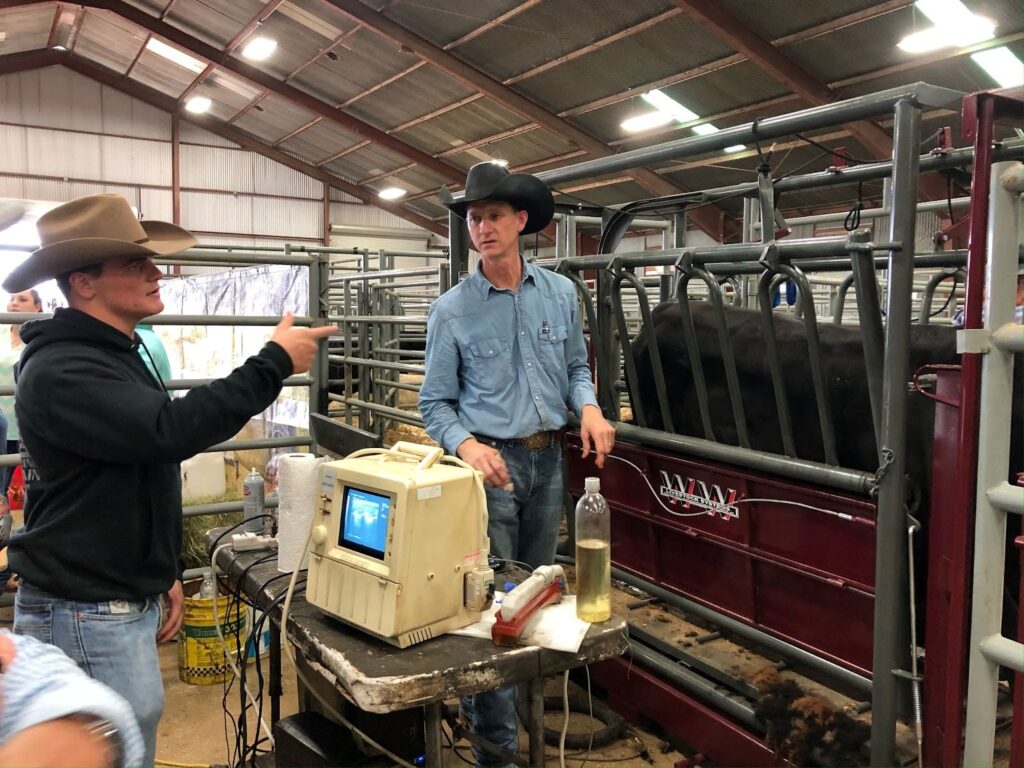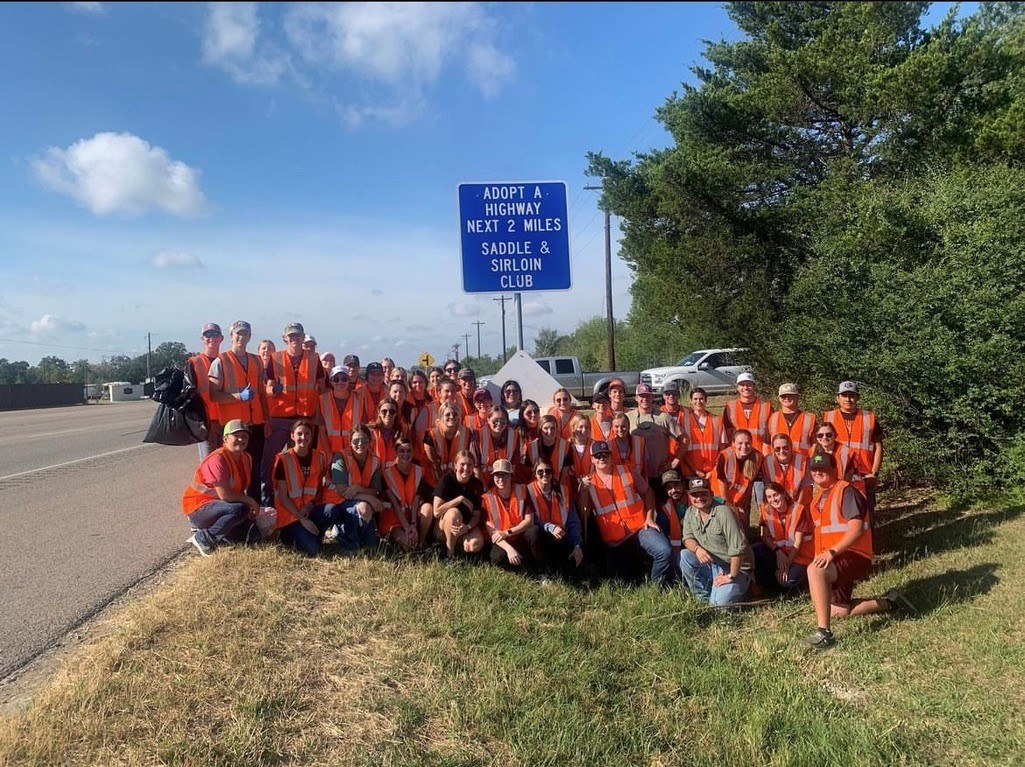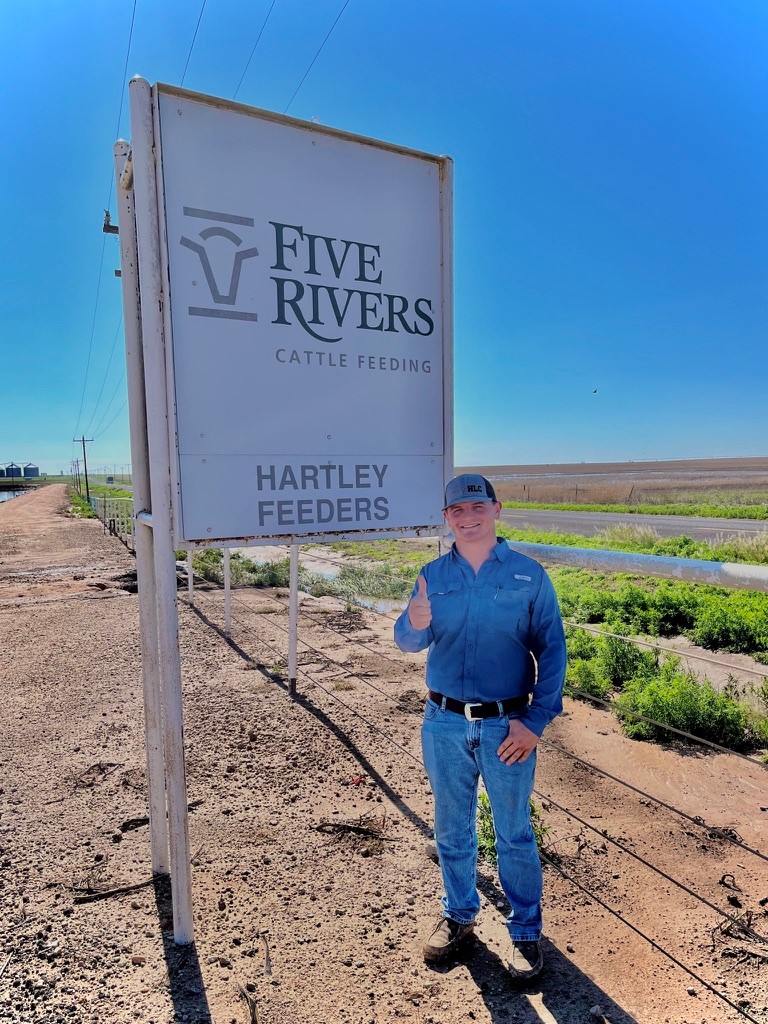Animal science student embraces family tradition, high-impact learning experiences
Blake Sitka prepares for his senior year eager to grow his knowledge of beef cattle nutrition
Decades-old tradition and heritage in the agriculture industry cultivated a passion in Blake Sitka that he hopes will guide his journey through the last year of his college experience.
As a senior in the Texas A&M College of Agriculture and Life Sciences’ Department of Animal Science, Sitka’s involvement in agriculture began early. It stemmed from the family cattle operation that provided a way of life for his grandfather and father before him. The tradition is being carried on with Sitka and his siblings, who all play a part in managing a small cattle herd on his family’s land outside of Hallettsville.

“Agriculture has been a component of my family’s life forever,” Sitka said. “Time goes on, and things change, but we have been able to manage the small cowherd, and we have enough to keep the tradition alive.”
Sitka’s parents, grandparents, ag teachers and family friends were all strong mentors and helped him grow his passion for agriculture through different experiences. Throughout high school, he was active in FFA and raised hogs and commercial steers.
Sitka said he learned most of his cattle knowledge and life lessons working for family friends on cattle operations in Hallettsville and surrounding areas, which afforded him new perspectives and practices in the industry.
“I saw agriculture as an element that makes the world go round,” he said. “Seeing how agriculture influences everything we do made me want to pursue a career in it.”
Sitka decided to study animal science after he realized there was more he wanted to learn about raising livestock. His older brothers are graduates of Texas A&M University, class of 2013 and 2020, which made Texas A&M an easy choice.
“I chose Texas A&M because I believe it’s the best agricultural school in the country,” he said. “I knew I could gain the maximum knowledge while living out multiple traditions.”
Student experience offers high-impact learning
Not long into his studies in the department, Sitka took advantage of the networking opportunities and quickly realized he was in the right place. Sitka joined the department’s oldest student organization, the Texas A&M Saddle and Sirloin Club, where he served as a member of the club softball team, the highway clean-up crew and participated in as many events and meetings as possible.

He took a step further and became a student worker at Beef Cattle Systems, an 800-acre cattle ranch in Burleson County managed by the department. The operation maintains a cow herd of 200 commercial cows and grazes 200 head of yearlings. The facility is used mainly for research, but students in the beef cattle production course occasionally participate in labs on the ranch.
Sitka assists with the routine daily management practices of a traditional operation, checking the herd in the morning and assessing fences and water troughs to ensure everything is in working order. When it is time to work cattle, Sitka helps with vaccinations and pregnancy checks.
This learning experience offers a unique level of exposure to the industry for Sitka. While growing his knowledge of basic cattle management practices, Sitka also interacts with faculty in the department to learn about research projects.
“Blake is very responsible, enthusiastic, friendly and welcoming,” said Kendall Daniels, Beef Cattle Systems farm manager. “He shows a lot of interest in talking to the researchers about the projects taking place. He works hard and takes pride in doing a good job.”
Beef cattle nutrition focus
Sitka’s experiences exposed him to a broad view of the cattle industry, but raising commercial steers sparked an interest in beef cattle nutrition. He realized the impact nutrition makes on cattle from start to finish through his participation in the commercial steer program at the Houston Livestock Show and Rodeo and the San Antonio Stock Show and Rodeo.

“I loved changing the feed ration and viewing how it changed the steer’s body composition,” he said.
Sitka felt prepared to tackle the nutrition and feeds classes in the department and was eager to learn about career paths in the nutrition field. He secured an internship with Five Rivers Cattle Feeding at the Hartley Feeders division in the northwest corner of the Texas Panhandle, where he is learning how the 74,000-head feedyard operates. Sitka is most interested in the size and production practices of Five Rivers Cattle Feeding and is eager to work across various departments in the feedyard.
“Feeding 74,000 head is a challenge, but Five Rivers Cattle Feeding makes it look easy,” he said. “I’ve learned about ration sets and yard maintenance, and I’m ready to learn even more. After this, I will venture into the cattle and mill departments. I believe when I finish this internship, I will have a better understanding of the cattle feeding industry as a whole and will appreciate it more than I do already.”
Looking ahead, Sitka knows that his love for beef cattle nutrition will guide him down his career path. His senior year will be a time to finalize career plans, explore advanced degree opportunities and build even more relationships with people. He looks forward to the senior-level animal science classes that will teach him real-life situations and further his industry knowledge.
“I love beef cattle nutrition, no matter what production stage that might be,” said Sitka. “I want to find myself where I can give people instruction or advice about beef cattle nutrition, anywhere from the cow-calf sector to the finishing cattle stage.”


